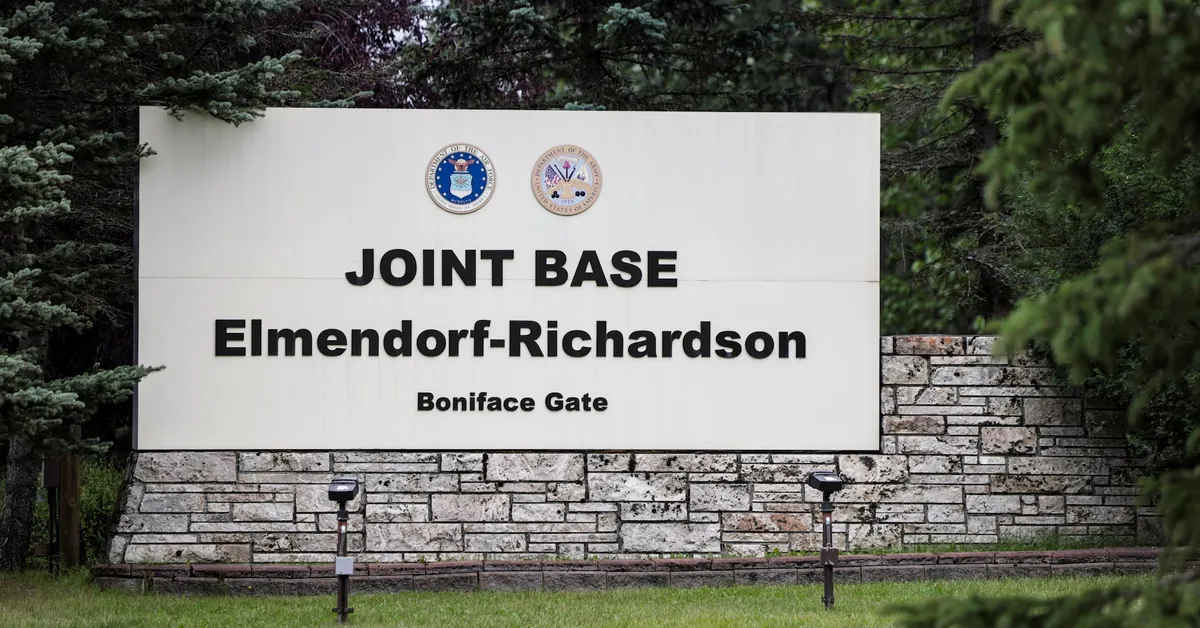
On August 15, 2023, Donald Trump and Vladimir Putin convened at a Cold War-era air force base in Alaska for a pivotal meeting aimed at addressing the ongoing Ukraine conflict. This significant summit marked the first in-person discussions between the U.S. president and the Russian leader since Trump returned to the White House. However, the prospects of achieving a ceasefire agreement appeared uncertain, with Putin offering a last-minute proposal for a potential nuclear deal that could provide both leaders a way to preserve their public images.
The meeting comes at a time when Ukrainian and European officials are increasingly concerned that Trump might compromise Ukraine’s position. Trump, who once claimed he could resolve the war in Ukraine within 24 hours, acknowledged on Thursday that the three-and-a-half-year conflict has proven to be more complex than anticipated. He expressed that a successful dialogue with Putin could pave the way for a subsequent three-way summit involving Ukrainian President Volodymyr Zelenskiy, who was notably excluded from Friday's discussions.
Trump is actively pursuing a truce as part of his broader objective to establish himself as a global peacemaker, a goal he has indicated is of significant importance to him, potentially enhancing his chances for the Nobel Peace Prize. Following a positive conference call on Wednesday, Ukraine and its European allies felt reassured when Trump agreed that Ukraine should participate in any discussions regarding territorial concessions. Zelenskiy noted that Trump also endorsed the idea of security guarantees in a post-war settlement, even though the U.S. president has not publicly commented on this aspect.
Putin, facing a strained Russian economy due to ongoing Western sanctions, requires Trump’s assistance to alleviate some of the economic pressures. The Kremlin leader is especially interested in preventing additional sanctions, which Trump has threatened. Just before the summit, Putin hinted at the possibility of a new nuclear arms control agreement, a move that aligns with Trump's interests.
On the eve of their meeting, Trump expressed optimism that Putin would be open to a deal regarding Ukraine. Nevertheless, the U.S. president's stance has fluctuated regarding the likelihood of a breakthrough. Meanwhile, Putin commended the U.S. for what he described as genuine efforts to conclude the war. A source close to the Kremlin indicated that both sides might have identified some common ground prior to the meeting, suggesting that certain terms could be agreed upon to avoid outright refusal from either leader.
While Putin has established strict conditions for a complete ceasefire, a potential compromise could involve a phased truce concerning aerial operations. Both sides, however, have accused one another of violating previous agreements. Analysts caution that Putin may attempt to present a facade of cooperation while retaining the ability to escalate military operations in Ukraine if necessary. As noted by Sam Greene, Director of Democratic Resilience at the Center for European Policy Analysis, any agreement that allows Russia to maintain control over the escalation dynamics would be seen as advantageous from Putin's perspective.
Amidst these discussions, Zelenskiy has accused Putin of merely stalling to evade U.S. secondary sanctions, firmly rejecting any notion of ceding Ukrainian territory. Trump has suggested that land transfers between Russia and Ukraine might be a viable solution to break the existing impasse. With Russian forces currently controlling nearly one-fifth of Ukraine, Putin is keen on revitalizing the economic, political, and business ties between the two nations without making progress on Ukraine contingent.
Putin, who has been in power for over 25 years, is focused on achieving a legacy that marks a decisive victory in the war. His primary objectives include securing complete control over the Donbas industrial region, which encompasses the Donetsk and Luhansk areas, as well as full control of Ukraine's Kherson and Zaporizhzhia regions. Additionally, he seeks assurances that NATO membership will not be considered for Kyiv and aims to impose limitations on the size of Ukraine's armed forces. However, Ukraine has categorically deemed these conditions unacceptable, perceiving them as a demand for capitulation.
This high-stakes meeting between Trump and Putin is poised to have significant implications for the future of Ukraine and the geopolitical landscape, with both leaders navigating a complex web of diplomatic, economic, and military challenges.